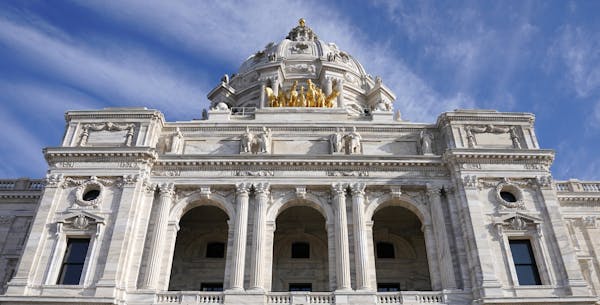Last session, legislation passed to help combat youth homelessness by creating a voucher program and investing more resources in combating it. A population who significantly faces homelessness are young adults who become homeless after they leave the foster care system.
ThreeSixty's journalist Abigeya Akalewold interviewed Rep. Heather Keeler, DFL-Moorhead, on Monday, Feb. 19, at the Capitol to talk about youth homelessness. Minnesota has been making improvements on helping youth find access to the help and support they need, especially Keeler.
ThreeSixty also interviewed James Lewis from The Link and Kristy Snyder at Youthprise about how their nonprofits are extending services with the boost in funding.
This interview has been edited for length and clarity.
How did you get involved with advocating for homeless youth?
My tribe is the Yankton Sioux Tribe which is the fourth-most, poverty-driven community in the nation. Homelessness was the norm for me and my family. Growing up, it was very common that my cousins, my aunties and my grandparents lived in the same house. I didn't realize at the time that it was because we didn't have housing options and were unsheltered. I ended up in Moorhead because I went to college there; and when I got into my professional career, I was an Indian Education Liaison for my school district. I worked with kids that were terrified about not knowing where they're going to sleep at night, because most of them are sleeping in someone's car. Now, in our Native community, our most recent data says we are 28 times more likely to experience homelessness compared to two years ago, which was 18 times.
What can the Homeless Youth Act do that other programs can't?
The Homeless Youth Act is geared to go toward shelters or facilities that are designed to directly support youth. Keep in mind that youth in this capacity is not just 18 and under; it goes up to age 24. We support programs like The Link because half of its board is made up of youth. We give individuals in the work the flexibility with the grant funding and the ability to support the kids because they know what to do with the money compared to a state entity would.
Is there a chance this act can expand?
That's the hope. The Homeless Youth Act was blended into the Pathway Home Act. Going back to my Indigenous beliefs, we do a lot with braids. When you have three strands and you braid it together, it's much stronger in general. So for the first time we put $100 million in shelter capital, which says you can build the brick and mortar you need. Then we added money into ESP, which is emergency services that help you operate. Our third component was the Homeless Youth Act, making sure kids never fall through the cracks. We braided and combined all that money and increased those pieces by two-, four-, six-times than we had in long-term funding.
Does this program work to help get the homeless youth to go to college? Does it help them get jobs so that they can rise from poverty?
Sometimes, it's not necessarily helping them graduate to get jobs, but a lot of it is the trauma and the mental health problems that you would experience if you have long term unsheltered living. As you can imagine, it's a toxic, harmful, horrific time of your life and you have to work through it. You can't just send people out in the world and assume they know how to take care of themselves. There are a lot of scholarships to help kids coming out of unsheltered living to stay in college. The Homeless Youth Act is saving kids off the streets and giving them tools so they can be healthy within themselves before pushing them to get education or jobs.
Is there anything you would like to say to homeless youth now?
The youth should show up. Your stories matter and your pain is not isolated. I think we need to give our youth the permission to talk about their experiences and their pain without them feeling the need to mask it with a smile. I would love kids with these lived experiences to see themselves in seats like mine. But you guys play a massive role in how people feel validated, how they feel seen, how they feel respected. As you go out into the world, you should be aware of how much weight your voice and the stories you write make.
Abigeya worked with retired reporters Bill Wareham and Star Tribune reporter Chloe Johnson to finish her story. This story was completed at ThreeSixty's Winter News Team: Capitol Edition in February 2024, where high school journalists covered important legislative issues, impacting Minnesota youth. Read more stories here.
ThreeSixty Journalism empowers diverse students with valuable leadership and storytelling skills, prepares them for college and career success, and fosters more representative truth telling. ThreeSixty invites highly motivated high school students to discover and amplify their voices through immersive college success programming. Learn more at threesixty.stthomas.edu.
Police departments are buying pickup trucks to spot dangerous distracted drivers on the road
One day in the frantic life of a Children's Minnesota emergency room nurse
State Sen. Nicole Mitchell off committee assignments while case under review

GOP endorses Tad Jude for congressional seat Dean Phillips is leaving

